Discover the Diverse Range of Shapes and Colors in Succulent Varieties
Succulents are a type of plant that have gained immense popularity in recent years. Known for their unique and eye-catching shapes and colors, these plants have become a favorite for both seasoned gardeners and beginners alike. From the spiky leaves of the aloe vera plant to the rosette formations of echeverias, succulents come in a wide range of shapes and colors, making them a versatile and beautiful addition to any indoor or outdoor garden.
We will delve into the world of succulents and explore the diverse range of shapes and colors that can be found within this plant family. We will discuss some of the most popular and visually stunning succulent varieties, highlighting their unique characteristics and care needs. Additionally, we will provide tips and tricks for growing and maintaining succulents, ensuring that you have the knowledge and tools to create a thriving succulent garden of your own. Whether you are a succulent enthusiast looking to expand your collection or a beginner wanting to learn more, this article will serve as a comprehensive guide to the fascinating world of succulents.
- Explore different succulent varieties to see a wide range of shapes and colors
- Visit a local nursery or garden center to find a diverse selection of succulents
- Research online to learn about the various shapes and colors available in succulent plants
- Attend a succulent show or exhibition to see a wide variety of shapes and colors in person
- Experiment with different succulent varieties to create a vibrant and visually appealing succulent garden
- Mix and match succulents with different shapes and colors to create interesting and unique plant arrangements
- Take advantage of the wide range of succulent shapes and colors to add visual interest to your indoor or outdoor space
- Use succulents with bright colors and unique shapes as focal points in your garden or container displays
- Incorporate succulents with different shapes and colors into your floral arrangements for a modern and trendy look
- Enjoy the beauty and diversity of succulent plants by appreciating their unique shapes and colors
- Frequently Asked Questions
Explore different succulent varieties to see a wide range of shapes and colors
When it comes to succulent plants, one of the most fascinating aspects is the incredible diversity of shapes and colors they come in. From the spiky and bold to the delicate and intricate, succulents offer a captivating array of options for any plant enthusiast.
Shapes
One of the unique characteristics of succulents is their ability to take on a wide range of shapes. Whether it's the spherical form of the Echeveria plant or the cascading tendrils of the String of Pearls, each variety has its own distinct shape that adds to its overall charm.
Some succulents, like the Crassula ovata (commonly known as Jade plant), have a tree-like appearance with a thick trunk and branches that sprout outwards. Others, such as the Aloe vera, have a rosette shape with fleshy leaves that grow in a circular pattern.
Additionally, there are unique succulent shapes like the Bunny Ears Cactus, which features flat, paddle-shaped pads that resemble rabbit ears. The variety of shapes in succulents is truly remarkable and offers endless possibilities for creating visually appealing arrangements.
 Vibrant Green and Red Succulents: Perfect for Your Garden
Vibrant Green and Red Succulents: Perfect for Your GardenColors
Aside from their diverse shapes, succulents also come in a stunning array of colors. While the classic green hue is common among many varieties, succulents can be found in an assortment of vibrant and eye-catching colors.
Some succulents, like the Aeonium Kiwi, display a striking combination of green, yellow, and pink tones in their foliage. Others, such as the Echeveria 'Black Prince', feature deep purple or burgundy leaves that add a touch of drama to any garden or indoor space.
There are also succulents that exhibit a mesmerizing range of colors throughout their lifespan. For instance, the Sedum 'Firestorm' starts with bright green leaves in the spring, transitions to fiery red in the summer, and finally turns deep burgundy during the fall.
Exploring the world of succulents
With their diverse shapes and colors, succulents offer endless possibilities for plant lovers. Whether you prefer a minimalist arrangement with monochromatic succulents or a bold display of contrasting shapes and hues, there is a succulent variety out there to suit your taste.
So, why not embark on a journey to explore different succulent varieties and discover the unique shapes and colors they have to offer? From local nurseries to online retailers, there are numerous sources where you can find an extensive selection of succulents to start your collection.
Remember, the beauty of succulents lies not only in their low maintenance nature but also in the incredible visual appeal they bring to any space. So, let your creativity flourish and embrace the diverse world of succulents!
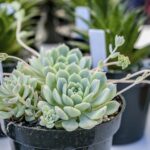 Cascading Succulents: A Guide to Long and Trailing Varieties
Cascading Succulents: A Guide to Long and Trailing VarietiesVisit a local nursery or garden center to find a diverse selection of succulents
When it comes to succulents, there is an incredible variety of shapes and colors to choose from. From the classic rosette shape to the more unusual geometric forms, succulents offer a stunning range of visual appeal. If you're looking to add some diversity to your succulent collection or start a new one, visiting a local nursery or garden center is a great way to explore the vast array of options available.
At a nursery or garden center, you'll find rows upon rows of succulents in different shapes, sizes, and colors. It's like stepping into a succulent wonderland! Whether you're a seasoned collector or a beginner, there's something for everyone. The knowledgeable staff can guide you through the selection process, helping you choose the right succulents based on your preferences and the conditions in your home or garden.
Shapes of Succulents
Succulents come in a myriad of shapes, each with its own unique charm. Some of the most popular shapes include:
- Rosettes: These are the classic succulent shape, characterized by their circular arrangement of leaves in a rosette pattern. They are often seen in popular varieties like Echeverias and Sempervivums.
- Trailing: Trailing succulents have long, cascading stems that drape down beautifully. They are perfect for hanging baskets or as trailing elements in arrangements. Examples include String of Pearls (Senecio rowleyanus) and Burro's Tail (Sedum morganianum).
- Columnar: These succulents have tall, upright stems that resemble columns. They add a striking vertical element to any arrangement. Cacti like the Organ Pipe Cactus (Stenocereus thurberi) and the Totem Pole Cactus (Pachycereus schottii) fall into this category.
- Ruffled: Ruffled succulents have leaves with wavy or frilly edges, giving them a unique and textured appearance. Examples include varieties like Kalanchoe luciae (Paddle Plant) and Echeveria 'Perle von Nürnberg'.
Colors of Succulents
The color palette of succulents is equally diverse, ranging from vibrant greens to deep purples and even shades of red and orange. Some succulents feature striking patterns or variegation, adding an extra layer of visual interest. Here are some popular color variations you might come across:
- Green: Green succulents are the most common and come in various shades, from pale green to dark and rich hues. Examples include Aloe vera and Haworthia.
- Blue/Grey: These succulents have a unique blue or grey-green coloration, which adds a touch of coolness to any arrangement. Popular blue/grey succulents include Echeveria 'Blue Curls' and Senecio mandraliscae (Blue Chalksticks).
- Purple: Purple succulents can range from deep plum to lighter lavender tones. They create a bold and dramatic effect in any collection. Some stunning purple succulents include Aeonium 'Zwartkop' and Echeveria 'Black Prince'.
- Variegated: Variegated succulents feature patterns or stripes of different colors on their leaves. They can be a combination of green, cream, yellow, or even pink, adding a splash of whimsy to your collection. Varieties like Crassula ovata 'Variegata' and Agave americana 'Variegata' fall into this category.
Exploring the diverse range of shapes and colors in succulent varieties is a delightful experience. So, why wait? Head to your local nursery or garden center, and let your succulent journey begin!
Research online to learn about the various shapes and colors available in succulent plants
When it comes to succulent plants, the variety of shapes and colors available is truly astounding. From the classic rosette shape to the more unique and unusual forms, there is a succulent to suit every taste and preference. By conducting research online, you can uncover a wealth of information about the diverse range of shapes and colors found in succulent varieties.
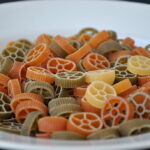 Discover the Most Vibrant and Unique Tri Color Succulent Varieties
Discover the Most Vibrant and Unique Tri Color Succulent VarietiesShapes:
Succulents come in a wide array of shapes, each with its own distinctive appeal. Some succulents, such as Echeveria, feature compact rosettes with fleshy leaves that tightly spiral inward. These rosette shapes create a visually stunning effect and are a popular choice among succulent enthusiasts.
Other succulents, like the Crassula ovata (Jade plant), have a tree-like shape with thick, woody stems and branches that give them an elegant and statuesque appearance. These types of succulents can add height and structure to your succulent garden or indoor collection.
There are also trailing succulents, such as Senecio rowleyanus (String of Pearls), which have long, cascading stems adorned with small, bead-like leaves. These trailing succulents are perfect for hanging baskets or planters, as they create a beautiful draping effect.
Colors:
The colors found in succulent plants are equally diverse and captivating. Succulents can display a range of vibrant hues, including shades of green, blue, purple, red, and even pink. Some succulents have leaves that change color depending on light exposure or temperature, adding an element of intrigue to their appearance.
For example, the Kalanchoe thyrsiflora (Paddle Plant) has thick, paddle-shaped leaves that can range from blue-green to a deep purple-red. This dramatic color variation makes it a striking focal point in any succulent arrangement.
 The Prolific Succulent World: A Guide to its 'Mother of Many' Species
The Prolific Succulent World: A Guide to its 'Mother of Many' SpeciesOther succulents, like the Sedum rubrotinctum (Jelly Bean plant), boast leaves that turn a bright red or orange hue when exposed to intense sunlight. This color transformation adds a dynamic element to the succulent's overall presentation.
Conclusion:
Exploring the diverse range of shapes and colors in succulent varieties can be a fascinating journey. From the charming rosettes to the intriguing tree-like forms, and from the cool blues to the fiery reds, succulents offer an endless array of possibilities for creating visually stunning and unique displays.
Whether you're a succulent enthusiast or just beginning your journey into the world of succulents, take some time to research and discover the incredible range of shapes and colors available. You'll be amazed at the beauty and diversity that can be found in these captivating plants.
Attend a succulent show or exhibition to see a wide variety of shapes and colors in person
Attending a succulent show or exhibition is an excellent way to witness the dazzling array of shapes and colors that succulent varieties have to offer. These events bring together enthusiasts, growers, and collectors from around the world, creating a vibrant atmosphere filled with rare and unique succulent specimens.
Upon entering the show, you will be greeted by a breathtaking display of succulents, each showcasing its distinct shape and color. The sheer diversity found within the succulent world is truly awe-inspiring and can leave you mesmerized.
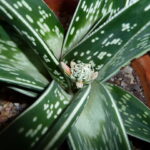 Guide to Aloe Family Diversity: Types of Succulents
Guide to Aloe Family Diversity: Types of SucculentsFrom the delicate rosette formations of Echeverias to the spiky and architectural shapes of Agaves, succulents come in a wide range of shapes that are sure to captivate your attention. Some varieties even have cascading or trailing growth habits, adding an element of grace and elegance to their overall appearance.
But it's not just the shapes that make succulents so visually appealing. The colors they come in are equally stunning. Succulents are known for their vibrant hues, ranging from vivid greens to deep purples, fiery oranges to soft pinks, and everything in between. Some varieties even have striking patterns, such as variegated leaves or intricate markings, adding an extra layer of visual interest.
Imagine strolling through rows of tables adorned with succulents in mesmerizing shades of red, blue, and yellow. Each plant seems to have its own unique personality, standing out from the crowd and beckoning you to take a closer look. It's an experience that will leave you inspired and eager to add more succulents to your own collection.
Whether you're a seasoned succulent enthusiast or new to the world of these fascinating plants, attending a succulent show or exhibition is an opportunity to immerse yourself in their beauty and discover the incredible range of shapes and colors that they possess.
Experiment with different succulent varieties to create a vibrant and visually appealing succulent garden
When it comes to creating a succulent garden, the possibilities are endless. With the wide range of succulent varieties available, you can experiment with different shapes and colors to create a vibrant and visually appealing display.
Succulents come in a diverse array of shapes, from rosettes and columns to trailing vines and spiky forms. Each shape adds its own unique element to your garden, allowing you to create interesting textures and patterns.
 Discover Vibrant Ruby Red Succulents: Your Perfect Find
Discover Vibrant Ruby Red Succulents: Your Perfect FindFurthermore, succulents offer an incredible variety of colors. From soft pastels to bold and vibrant hues, there is a succulent for every color palette. Some succulents even have leaves with multiple colors, adding an extra layer of visual interest to your garden.
Shapes
One of the most fascinating aspects of succulent varieties is their diverse range of shapes. Some succulents, such as Echeverias, form tight rosettes with overlapping leaves. These rosette-shaped succulents create a visually pleasing symmetrical pattern.
On the other hand, you might find succulents like Aloe vera that grow in a columnar shape. These tall and upright succulents add a vertical element to your garden, creating a sense of height and structure.
If you're looking for a trailing or cascading effect, consider adding succulents like String of Pearls or Burro's Tail. These succulents have long, trailing stems that gracefully spill over the edges of containers or hanging baskets.
For a more architectural look, opt for succulents with spiky forms like Agave or Haworthia. Their sharp and angular leaves create a striking contrast against the softer shapes of other succulents.
Colors
The color range of succulent varieties is truly remarkable. Succulents can be found in shades of green, blue, purple, pink, red, yellow, and even black. Some succulents, like Sedum 'Firestorm', have leaves that change color throughout the seasons, adding dynamic interest to your garden.
If you prefer a monochromatic look, you can create a succulent garden using just one color group, such as various shades of green. This creates a soothing and cohesive display.
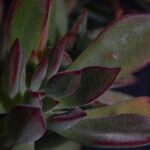 Explore Luxurious Velvet-Leaf Succulents for Your Garden
Explore Luxurious Velvet-Leaf Succulents for Your GardenOn the other hand, if you want to add a pop of color to your garden, consider combining succulents in contrasting hues. Pairing purple and yellow succulents, for example, creates a vibrant and eye-catching combination.
Don't forget to consider the color of the succulent's flowers as well. While not all succulents produce flowers, those that do can add an extra burst of color to your garden.
The diverse range of shapes and colors in succulent varieties allows you to unleash your creativity and create a visually stunning succulent garden. Experiment with different combinations to find what resonates with your taste and enjoy the beauty that succulents bring to your outdoor space.
Mix and match succulents with different shapes and colors to create interesting and unique plant arrangements
When it comes to succulents, the possibilities for creating stunning plant arrangements are endless. One of the most exciting aspects of working with succulents is the diverse range of shapes and colors they come in. From spiky and cylindrical to rosette-shaped and paddle-like, succulents offer a wide variety of unique shapes that can add visual interest to any arrangement.
Not only do succulents come in various shapes, but they also display a stunning array of colors. From vibrant greens and blues to deep purples and fiery oranges, succulents showcase a beautiful spectrum of hues. The combination of different shapes and colors in a single arrangement can create a visually striking display that is sure to captivate anyone who lays eyes on it.
Experiment with Different Shapes
One way to create an interesting succulent arrangement is to play with different shapes. Mix spiky succulents like Agave or Aloe with rounded rosette-shaped succulents such as Echeveria or Sempervivum. The contrast between the sharp edges of spiky succulents and the soft curves of rosette-shaped succulents can create a visually appealing arrangement with a dynamic balance.
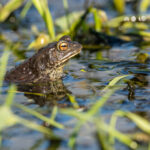 Unveiling the World of Succulent Plants and Their Unique Traits
Unveiling the World of Succulent Plants and Their Unique TraitsAdditionally, paddle-like succulents like Jade plants or Kalanchoe can add a unique touch to your arrangement. Their broad, flat leaves create a sense of fullness and provide a visual anchor for the other succulents in the arrangement.
Play with Colors
The color palette of succulents is as diverse as their shapes. By incorporating succulents with different colors into your arrangement, you can create a vibrant and eye-catching display. Consider combining succulents with contrasting colors, such as pairing a deep purple Echeveria with a bright green Sedum. This contrast will make each succulent stand out and add visual depth to your arrangement.
Alternatively, you can create a monochromatic arrangement by selecting succulents within the same color family. Choose various shades of blue-green succulents like Senecio or variations of pink and red from the Crassula family. This harmonious color scheme will create a calming and cohesive arrangement.
Consider Texture
While shape and color are essential factors to consider when creating succulent arrangements, texture should not be overlooked. Some succulents have smooth, glossy leaves, while others have rough, textured surfaces. Combining succulents with different textures can add an extra dimension to your arrangement and create visual interest.
For example, mix a smooth-leaved Haworthia with a fuzzy Sedum or combine a bumpy-leaved Lithops with a velvety Crassula. The contrast between smooth and textured leaves will add depth and intrigue to your arrangement.
Conclusion:
Creating succulent arrangements is a delightful way to explore the vast range of shapes, colors, and textures these plants have to offer. By experimenting with different combinations, you can design unique and visually stunning displays that will bring beauty and joy to any space. So, let your creativity run wild and discover the endless possibilities that succulents provide.
 Non-Cactus Succulents: A Guide to Other Succulent Varieties
Non-Cactus Succulents: A Guide to Other Succulent VarietiesTake advantage of the wide range of succulent shapes and colors to add visual interest to your indoor or outdoor space
When it comes to succulent plants, there is an incredible variety of shapes and colors to choose from. These unique characteristics make succulents a popular choice among plant enthusiasts looking to add visual interest to their indoor or outdoor spaces.
Succulents come in a wide array of shapes, ranging from small and compact to tall and spiky. Some common shapes include rosettes, columns, and trailing vines. Each shape offers its own distinct charm and can be used to create different visual effects in your garden or home.
Additionally, succulents come in a stunning array of colors. From vibrant greens to deep purples, and even shades of blue and pink, there is a succulent color to suit every taste. The diverse range of colors allows you to create beautiful and eye-catching arrangements by mixing and matching different varieties.
Popular Shapes in Succulent Varieties:
- Rosettes: Succulents with rosette shapes have tightly clustered leaves that form a circular or rosette-like pattern. These plants often have a symmetrical and compact appearance, making them ideal for adding structure and focal points to your garden.
- Columns: Succulents with columnar shapes have tall, upright growth habits. Their slender and vertical form adds a sense of height and elegance to any space. These succulents work well as standalone plants or as part of a vertical garden.
- Trailing Vines: Succulents with trailing vines have long, cascading stems that gracefully drape over the edges of containers or hanging baskets. These varieties are perfect for adding a touch of whimsy and softness to your indoor or outdoor space.
Exciting Colors to Explore:
- Green: The most common color in succulents, various shades of green can range from light and lime to dark and emerald. Green succulents create a fresh and natural feel in any setting.
- Purple: Succulents with purple hues add a touch of mystery and elegance to your space. Ranging from soft lavender to deep plum, purple succulents create a stunning contrast when paired with other colors.
- Blue: Blue succulents are a unique and sought-after variety. With shades ranging from pale blue to turquoise, these succulents bring a cool and calming presence to your garden.
- Pink: For a pop of color, consider incorporating pink succulents into your collection. From delicate pastel pinks to vibrant magenta, these succulents add a touch of femininity and playfulness.
With such a diverse range of shapes and colors to choose from, succulents offer endless possibilities for creating visually stunning displays. Whether you prefer a symmetrical and structured look or a more whimsical and eclectic arrangement, succulents can be the perfect addition to your indoor or outdoor space.
So, go ahead and explore the fascinating world of succulents. Experiment with different shapes and colors to create a unique and captivating display that will surely be the envy of your friends and neighbors!
Use succulents with bright colors and unique shapes as focal points in your garden or container displays
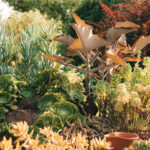 Discover the Enchanting Beauty of Ruffled Succulent Leaves
Discover the Enchanting Beauty of Ruffled Succulent LeavesSucculent plants are known for their unique shapes and vibrant colors, making them an excellent choice for adding visual interest to your garden or container displays. Whether you have a spacious outdoor garden or a small balcony, incorporating succulents can instantly enhance the overall aesthetic appeal.
One of the greatest advantages of succulents is the wide range of shapes and colors they come in. From the spiky and architectural forms of Agave plants to the rosette-shaped Echeverias, there is a succulent variety to suit every taste and preference.
Bright Colors
Succulents offer an array of brilliant colors that can enliven any space. Some succulent varieties, such as Sedum 'Firestorm' or Euphorbia tirucalli 'Sticks on Fire', feature fiery shades of red and orange, making them perfect for creating a vibrant focal point in your garden. On the other hand, succulents like Kalanchoe 'Flapjacks' or Graptosedum 'California Sunset' boast hues of pink, purple, and even blue, adding a subtle touch of color to your outdoor or indoor displays.
Unique Shapes
Succulents exhibit an endless variety of fascinating shapes, which can add an element of intrigue to your garden or container arrangements. For example, Crassula ovata 'Gollum' showcases tubular leaves that resemble the famous character from "The Lord of the Rings," while Haworthia cooperi forms tight clumps of translucent, pearl-like leaves. These distinctive shapes not only make succulents visually appealing but also serve as great conversation starters for guests visiting your garden.
Creating Focal Points
The vibrant colors and unique shapes of succulents make them ideal choices for creating eye-catching focal points. Placing a large, spiky Agave in a strategic spot in your garden or using a cluster of colorful Echeverias as the centerpiece of your container display can draw attention and add a captivating touch to your overall design. By carefully selecting and arranging succulents, you can create visually stunning compositions that highlight their diverse range of shapes and colors.
Succulents offer an exciting array of shapes and colors that can transform any garden or container display into a visually captivating space. Whether you prefer bright and bold hues or prefer the subtlety of unique shapes, there is a succulent variety just waiting to be discovered and added to your collection. So, let your creativity flourish by incorporating these fascinating plants into your outdoor or indoor designs.
Incorporate succulents with different shapes and colors into your floral arrangements for a modern and trendy look
Succulents are the perfect addition to any floral arrangement, adding a touch of uniqueness and modernity. With their diverse range of shapes and colors, succulents can effortlessly enhance the overall aesthetic appeal of your floral displays.
One of the greatest advantages of incorporating succulents into your arrangements is the wide variety of shapes they come in. From rosette-shaped succulents like Echeveria and Sempervivum to trailing varieties like String of Pearls and Burro's Tail, there is a succulent shape to suit every design vision.
Furthermore, succulents offer an array of stunning colors that can elevate the visual impact of your arrangements. Whether you prefer the vibrant hues of Crassula 'Campfire' or the soft pastels of Graptosedum 'California Sunset', there is a succulent color palette that can complement any floral theme.
Creating a harmonious composition
When incorporating succulents into your floral arrangements, it's essential to consider the overall composition to achieve a harmonious and balanced look. A mix of succulents with different shapes and colors can add depth and visual interest to your arrangement.
Start by selecting a focal succulent with a bold shape or color. This will serve as the centerpiece of your arrangement, drawing the eye and setting the tone for the rest of the composition. Surround the focal succulent with smaller succulents of contrasting shapes and colors to create a visually striking contrast.
Consider using a combination of rosette-shaped succulents, trailing varieties, and upright succulents to add dimension and variety to your arrangement. The different shapes and growth habits of succulents will create visual movement and lend a dynamic touch to your floral displays.
Choosing the right container
The container you choose for your succulent arrangements can further enhance the overall aesthetic appeal. Opt for containers that complement the shapes and colors of the succulents you have selected.
If you have chosen succulents with vibrant hues, consider using neutral-toned containers to allow the colors to take center stage. On the other hand, if your succulents have softer, pastel tones, opt for containers in complementary colors to create a cohesive and visually pleasing arrangement.
Remember to choose containers with adequate drainage to prevent waterlogging, as succulents are highly susceptible to root rot. This will ensure the longevity and health of your succulent arrangements.
Incorporating succulents with different shapes and colors into your floral arrangements is an excellent way to create a modern and trendy look. Their unique characteristics and stunning aesthetics make succulents a versatile and captivating addition to any floral display. So, unleash your creativity and experiment with the diverse range of succulents available to create visually stunning arrangements that are sure to impress.
Enjoy the beauty and diversity of succulent plants by appreciating their unique shapes and colors
Succulents are a fascinating group of plants known for their ability to store water in their leaves, stems, and roots. But what makes them truly captivating are the diverse range of shapes and colors they come in. From the classic rosette shape to the more unusual geometric patterns, succulents offer a visual feast for plant lovers.
Shapes:
- Rosette: The rosette shape is one of the most common and iconic among succulents. It features a circular arrangement of leaves that radiate from a central point, resembling a flower. Echeverias and Sempervivums are popular examples of succulents with rosette shapes.
- Columnar: Some succulents have a tall and cylindrical shape, with their leaves or stems growing vertically. This form allows them to maximize sunlight exposure while conserving water. The tall and slender columns of Cereus and Euphorbia species are perfect examples of this shape.
- Trailing: Trailing succulents have a cascading growth habit, with their stems or leaves hanging down. They are great for hanging baskets or trailing over the edges of pots. String of Pearls (Senecio rowleyanus) and String of Hearts (Ceropegia woodii) are popular choices for their delicate trailing appearance.
- Clustered: Clustered succulents grow in tight clumps, with multiple rosettes or offsets emerging from a single base. This shape creates a visually appealing arrangement of plants, perfect for creating a focal point in your garden. Haworthias and Sempervivums often exhibit this clustered growth habit.
Colors:
- Green: Green is the most common color in succulents, ranging from pale lime green to deep, rich emerald tones. This color signifies their ability to thrive in arid environments.
- Blue: Some succulents, such as Echeveria 'Blue Bird' and Agave parryi, have a stunning blue-gray hue. This color adds a touch of coolness and uniqueness to any succulent collection.
- Purple: Purple succulents, like Sedum 'Purple Emperor' and Aeonium 'Zwartkop,' bring a regal touch to your garden. The deep purple color adds depth and intrigue to any arrangement.
- Red: Succulents with red hues, like Sempervivum 'Red Beauty' and Crassula capitella 'Campfire,' create a striking contrast against the greenery. The vibrant red color is eye-catching and adds a bold element to any garden.
By exploring the vast array of shapes and colors in succulent varieties, you can create a visually stunning collection that will be the envy of any plant enthusiast. Whether you prefer the classic rosette shape or the trailing elegance of cascading succulents, there is a succulent to suit every taste and style.
Frequently Asked Questions
1. What are succulents?
Succulents are plants that have thick, fleshy leaves or stems, which store water. They come in a wide variety of shapes and colors.
2. How do I care for succulents?
Succulents are generally low-maintenance plants. They require well-draining soil, plenty of sunlight, and infrequent watering.
3. Can I grow succulents indoors?
Yes, many succulents can be grown indoors as long as they receive adequate sunlight. Be sure to place them near a window or use grow lights.
4. What are some popular succulent varieties?
Some popular succulent varieties include Echeveria, Aloe Vera, Jade Plant, and Haworthia. Each variety has its own unique shape and color.
